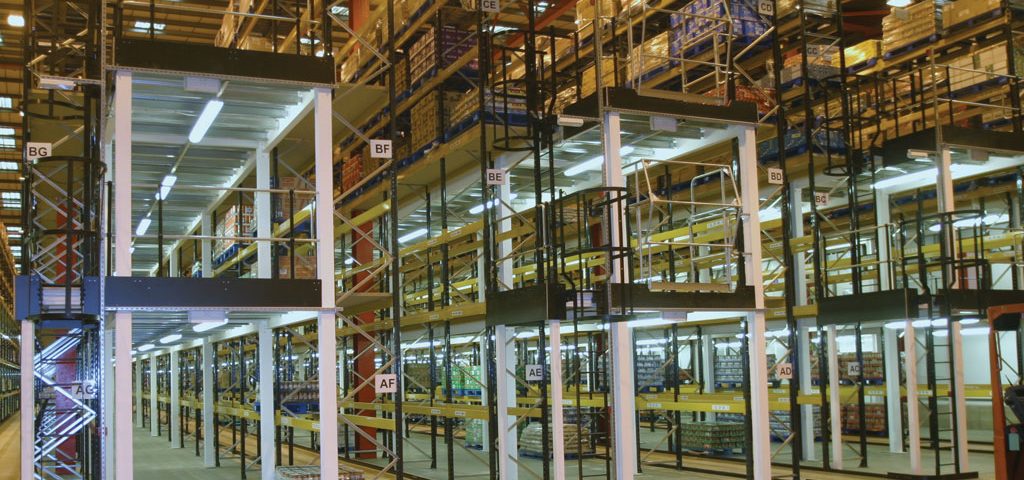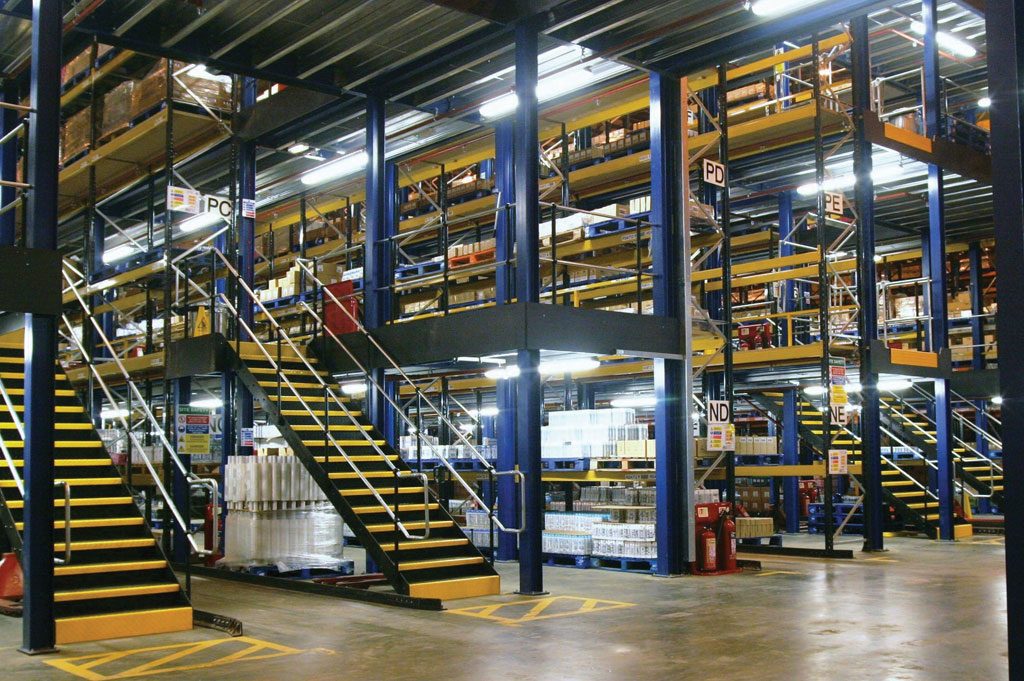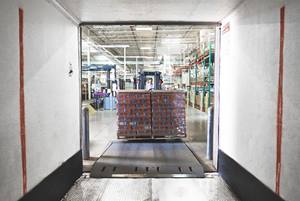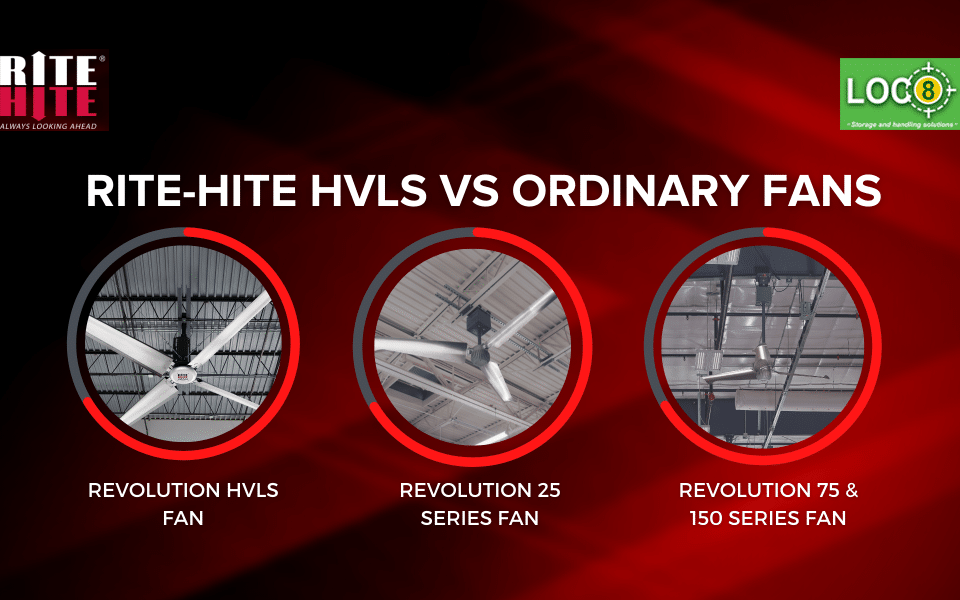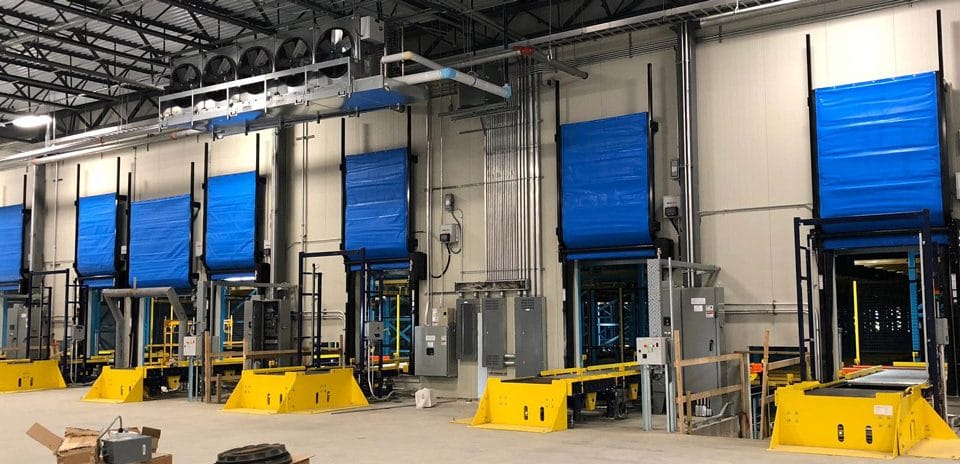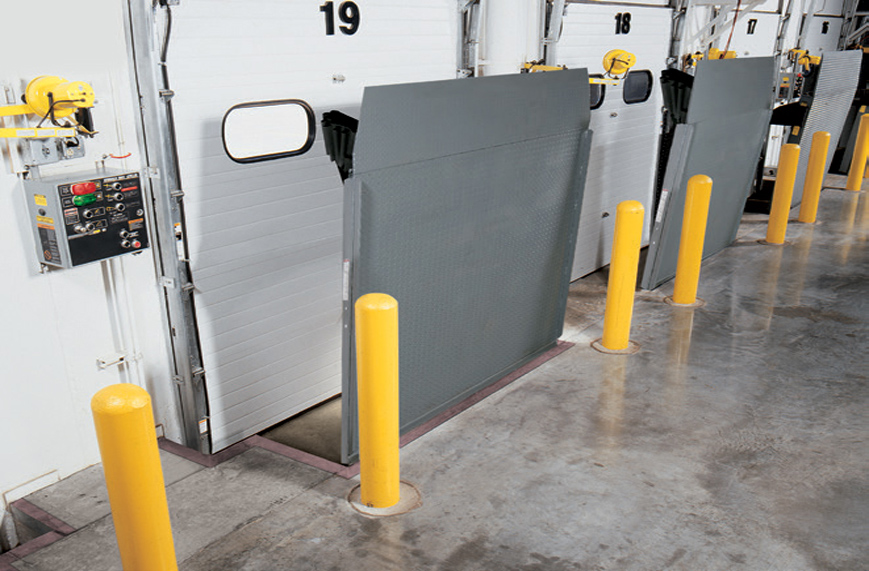
Dock Levelers: What are These and Why is it Essential for Your Warehouse Facility?
September 9, 2018
All You Need to Know About Warehouse Design Consultants
November 8, 2018Minimizing the operation’s costs is a top priority for all business owners as they try to hit the maximum profit margins. This is especially made possible when a business employs warehouse logistics as part of its business supply chain.
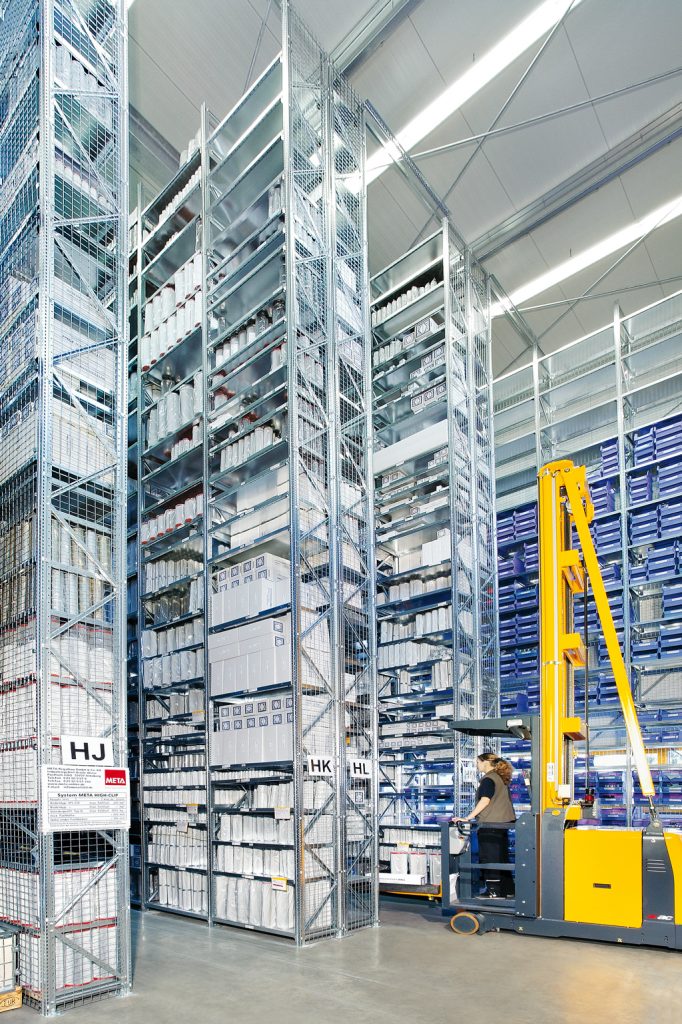
What is Warehouse Logistics?
Warehouse logistics involves all the complex and varied factors – organizing, moving, and managing – involved in a distribution center. This encompasses the flow (receiving and shipping) of physical inventory and that of abstract goods, including time and information.
Warehouse logistics might also extend to anything from damaged goods handling to pest control, from customer returns to human resource management and even safety policies. In short, warehouse logistics comprises all the organizational tools, policies, and procedures necessary to keep your business operations running efficiently and smoothly.
What is the Role of Warehouse Logistics in Supply Chain?
The role of warehouse logistics is very simple – It is to increase your business’ revenue.
You know if you have a proper warehouse logistics in place if your warehouse or business operates more efficiently. You can measure this when:
- your business operations run effectively,
- inventory is appropriately accounted for,
- the correct goods are sent at the perfect time,
- stock is refilled when required,
- minimal picking errors arise, and
- all the systems, processes, and people fall into the right place as they are intended.
When the above criteria are met, there are minimal errors and issues, and that means maximized revenue.
When you adopt a solid warehouse management system (WMS) to control your business logistics, you:
- Guarantee accurate, actual inventory counts – You can determine how much inventory is in the warehouse and its exact location within the warehouse.
- Decrease returns – Accurate inventory means that you send the right goods, the first time.
- Auto-replenish stock – Do not wait until you are out or nearly out of stock to place an order for more, the WMS will auto-refill your inventory when your stock starts to get low.
- Maximize warehouse space – WMS automate warehouse practices (such as stock picking and rotation), which means that you will require less space for employees, which translates to maximizing your space to store additional inventory.
Other functions of warehousing in logistics extend to improved transparency and visibility, better demand planning, stock traceability, optimized processes, efficient labor allocation, improved customer service, and fewer picking errors.
All these factors result in reduced operational expenses which would again translate to more revenue.
What are the Major Activities included in Logistics?
Logistics includes about 9 major activities that facilitate the flow of goods from point A (origin) to point B (consumption). They can also be considered as the overall part of a logistics process.
1. Customer Service
Customer service is a user-oriented philosophy that manages and integrates all elements of the client’s interlace within a set optimal cost-service mix. It is the output of all logistics systems.
It involves getting the right goods, to the right user, at the right location, at the right time, and in the right condition, at the least possible cost. Effective customer service translates to customer satisfaction, which is the end result of your marketing process.
2. Demand Forecasting or Planning
There are different kinds of demand forecasting. The two main ones are:
- Marketing forecasts– They are based on competition, pricing, promotions, and so on.
- Manufacturing forecasts – They are based on current inventory levels and marketing’s sales demand forecasts.
Logistics often becomes a part of your forecasting when you are determining how much you should order from your suppliers and how much of final goods you should hold or transport in every market that your business serves.
3. Inventory Management
This process encompasses trading off the amount of inventory held to attain better customer service levels. Your business trades off the cost of holding inventory such as variable storage costs, obsolescence, and capital tied up.
These costs often range from 14% to over 50% of the value of your goods on a yearly basis.
4. Logistics Communications
Today, communications are automated, rapid, and complex. Logistics borders with a wide range of organizations and functions in the communication processes. That’s mainly because communication often occurs between:
- Your organization, your suppliers, and your customers.
- Functions within your organization, including accounting, engineering, production, marketing, and logistics.
- Different logistics activities.
- All aspects of every logistics activity, like coordinating warehouse material, work in progress, and finished products.
- Members of the supply chain, including your intermediaries and secondary suppliers or customers.
Communication is critical to the effective functioning of all systems, whether it is your wider supply chain or the distribution system.
5. Material Handling
This covers a wide area that involves virtually all facets of all movements of the raw material, work in progress, or finished products within your warehouse or plant. Since your business incurs costs every time a product is handled or moved without adding value, the primary goal of material management is to get rid of handling when possible.
That includes reducing travel distance, inventory levels, loss due to waste, bottlenecks, damage, mishandling, and pilferage.
6. Order Processing
Order processing involves the systems that your firm has for receiving orders from your clients, tracking the status of orders, and informing your customers about the orders, and even filling the order and availing it to your consumers.
Another area of order processing includes checking your customer credit, accounts receivable, and invoicing.
7. Packaging
From a logistic perspective, packaging is an important part for storage and protection of goods and as a form of marketing/advertising. It conveys an important message to your potential consumers.
Logistically, packaging offers protection during transportation (during long distance) and storage. Packaging can also ease storage by properly designed the goods for the warehouse configuration as well as materials handling equipment.
8. Parts and Service Support
Logistics also comes in handy to back your after-sale support service. This can include stocking adequate spares, delivery of repair parts your clients, responding quickly to repair demands, and picking up malfunctioning or defective products.
9. Traffic and Transportation
A major logistics activity is to provide for the movement of goods and materials from point A to point B, and perhaps to the final point of disposal. Transportation includes the selection of mode (pipeline, truck, rail, air, or water), assuring of adherence to regulations in the region of shipment, selection of the carrier, and the routing of the shipment.
Transportation is the biggest single cost of all logistics activities.
New Trends in Warehouse Logistics in the UAE
Our managing director at LOC8, a Dubai-based warehousing solutions company, Stewart Arbuckle believes that a good number of firms in the Middle East will continue to invest in modernizations of their material handling solutions, effectively moving away from the outdated “wait-and-watch” approach of the past decade.
His statement is supported by the findings of Logistics Middle East’s readership study on the material handling segment, which interviewed about 250 senior personals from this industry about their investment habits. Of all the respondents, 91.4% stated that their firms were considering investing on material handling apparatus such as warehouse racking, pallets, and forklifting trucks.
More explicitly to the Arab globe, 58.7% of the participants were considering investing in automated storage; this was based on the argument that warehouse automation was about to change the industry. The other 41.3% believed that automation is a possibility for the future operations.
There is also an increased need for companies to enhance their supply chain effectiveness to make their operations more cost-effective and proficient. Some of the logistics firms are adopting a cost-cutting approach while others are realizing this goal by implementing automated handling or technology solutions.
Logistics operators are more open to the use of latest technology on the handling and picking environment and this will only result in future opportunities for container unloading systems, voice-controlled picking solutions, pick-to-light technology, and other similar products.
Industrial leaders are also investing in environmental friendly material handling systems that minimize emission levels while producing less noise.
What are the Common Issues when it comes to Warehouse Logistics and Material Handling?
Some common logistics issues do not get the consideration they deserve. That’s mainly because the work must be done soonest possible, leaving no time to sit back and reflect on the bigger picture.
Let’s look at the most common logistics issues and how to solve them to make your warehouse operations more efficient.
1. Racking Aisles
Issue – Reduction of the aisle widths can make moving with handling equipment difficult and even slow down the operations. There are also occasional damages due to bumping into goods, rack uprights etc.
Solution – There are a lot of forklifts that are designed to specifically work in tight and narrow aisles. These machines can even enable the operator to stand up while working as opposed to sitting down. This offers a better view of the material, making navigation easier, and reducing accidents.
2. High Elevation
Issue – Some warehouses require employees to put themselves in elevated situations, needing a stable and portable work station.
Solution – Personnel lifts can aid workers to get their job done in these situations. Some useful equipment here would include telescoping boom lifts, fork fitted safety cages and scissor lifts.
3. Higher Reach
Issue – More vertical reach is required when picking orders.
Solutions – A lot of order picking equipment works well for low to medium level needs, but lacks ability when accessing higher products. The solution is to use high-level order picking equipment.
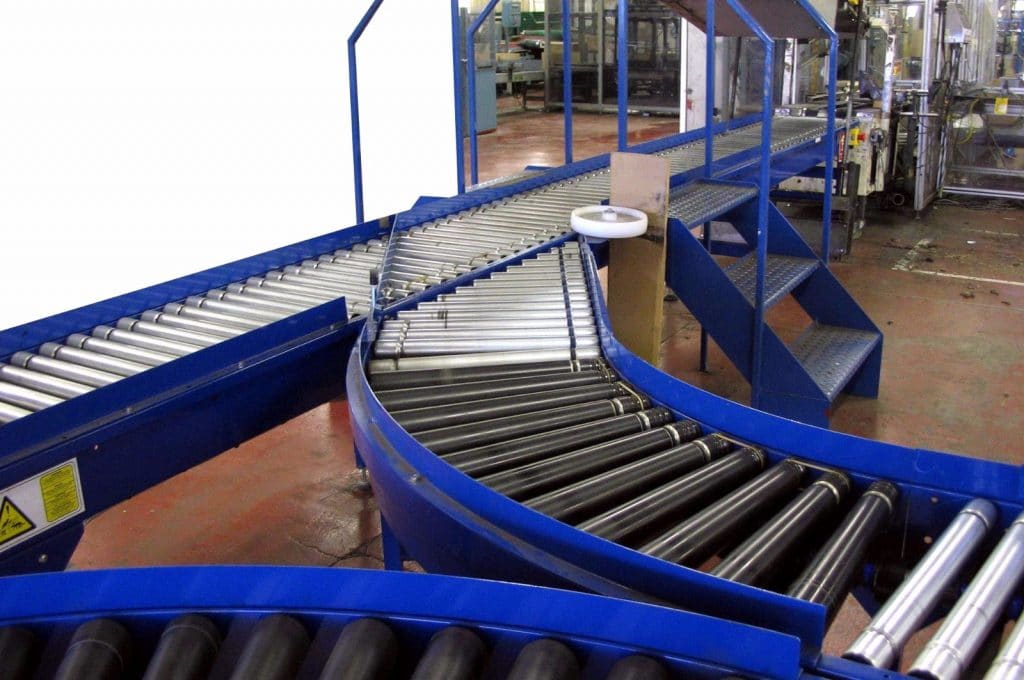
4. Labor Intensive
Issue – Workers are always required to move items from one point to another, which consumes valuable time that can be spent on productive tasks.
Solution – Man rider trucks, conveyors or robotic delivery machines come in handy when solving this problem.
5. Battery Change
Issue – Warehouses are always busy. Maintaining and charging the batteries for electric forklifts as well as other equipment for handling materials can be time consuming.
Solution – It is advisable to try the lithium ion batteries which charge faster than the lead-acid models and don’t need anywhere near the same maintenance.
6. Leveraging Automation
Issue – Although the operations are running smoothly, there is a concern that warehouses aren’t taking the full advantage of automated opportunities to boost efficiency.
Solution – Self-guided robotic cars can be the solution. These cars use laser mapping to form a unique map of the warehouse and the latest software that allows self-guided trucks to do the tasks while working with workers. These devices are easy to program.
How to Effectively Manage the Warehouse Logistics?
Managing warehouse logistics seems quite easy but it is a demanding process. You need to watch out for minute details like cataloging, scanning, billing, and data-entry. One tiny mistake can lead to the collapse of your warehouse, but following these tips can make it run smoothly.
1. Create a Budget
A warehouse is a business. Therefore, take your time and set a budget. Creating a budget provides you with a blueprint that will allow you to arrive safely at your targeted destination.
Consider the following monthly costs when setting your budget.
- Equipment rental
- Utilities
- Labor
- Security guards
- Insurance
- Rent
- Security systems
Next, monitor your expenses with the aim of staying within your budget.
2. Quickly Enter Data
Enter the data when you receive it to minimize the chance of missing a critical detail or making a data-entry error. Remember that critical decisions are made from what the data shows the users.
Another key aspect of data entry is to make sure that your data entry team understands how their job impacts the warehouse.
3. Set Discipline Standards
In addition to setting discipline standards, you should hold your employees accountable. Here are some standards to consider:
- Personal appearance
- Cleanliness standards
- Dress code
- Safety standards
- Data entry standards
- Sorting standards
- Grab standards
- Billing practices
Standards bring discipline, discipline brings order, and order brings efficiency and lean operations.
4. Forecast Your Labor Needs
Always be proactive as opposed to being reactive. Ensure that the set channels of communication are open and clear. Also, know the limitations and strengths of your employees.
5. Keep Optimum Stock Level
Storing excess stock only add to your operational cost, while not fulfilling order fails to maximize your revenue. The efficient and accurate receipt of stock as well as returns into your facility improves your warehouse management and means that you are ready for all eventualities.
6. Process Sales Orders Quickly
The accurate and swift processing of sales orders starts in the warehouse when orders are made and entered in your storage premise. Enhancing your warehouse management enables accurate and fast sales order processing.
The above six tips will ensure that you enjoy a smooth operation in order to be more efficient. Other practices that you should implement include:
- Control the storage and movement of material.
- Process all transactions efficiently.
- Link sales order processing to warehouse management.
What Industries and Sectors Benefit from Efficient Warehouse Logistics?
There are a lot of industries which benefit (or can benefit) from efficient warehouse logistics, including:
- Home improvement
- Construction
- Food and dairy
- Hi-tech
- Retail
- Forest industry
- Hotels
- Pharmaceuticals and healthcare
Looking for the Top Warehouse Logistics Consultants?
One question in mind (especially those who haven’t worked with warehouse logistic consultants before) is probably: Will I get value for my money?
At LOC8, you can be rest assured that you will get a bang for your buck.
As an experienced material handling company, we are a reliable partner for your organization. With the expertise in designing, installation, and project management of warehousing, material handling solutions, and we can help you solve all your warehousing problems as well as your supply chain requirements.
Material flow evaluations, facility planning, warehouse design and operational analysis are some of the solutions available from our experience consulting experts across the LOC8 service center.
From initial consultation and interaction to custom-designed solutions to future operational and product support, we provide an unmatched depth of material handling equipment and warehouse solutions to meet your facility, industry, and application requirements.
Therefore, if you are searching for a quality warehouse logistic company that acts as a partner to make sure that your business is fulfilled and optimized for efficiency, look no further than LOC8. We would love to interact with you. Contact us today to get the best logistics consulting services you deserve.


